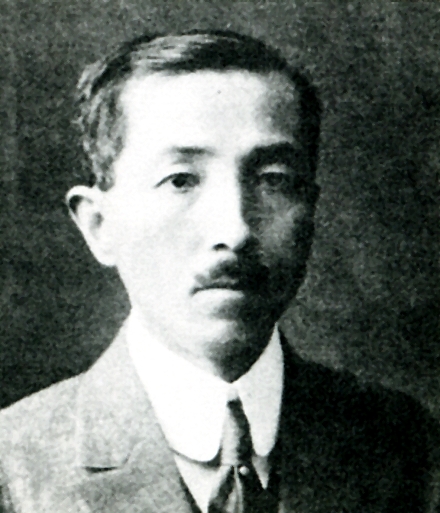
A native of Kyoto city, Tatsuo Kuriyagawa (1880-1923) honed his knowledge on Western literature, studying under Lafcadio Hearn and then Soseki Natsume at Tokyo Imperial University (now the University of Tokyo). In 1904, when he graduated as the top student, Kuriyagawa began his writing career by contributing an article on W. B. Yeats, which is deemed Japan’s earliest formal theory on the poet and his works.
While he introduced Western literature systematically to readers in Japan, Kuriyagawa kept focused on what was going on in the world of Irish letters. For example, the themes of his writings in the 1910s ranged from the Irish Literary Revival to authors including G. B. Shaw. In fact, he was so conscious of the literary trend that he wrote in 1917 about Lord Dunsany, whose dramas had started to gain popularity in the U.S. in parallel with the Little Theatre Movement.
In addition, Kuriyagawa was also intrigued by love marriage – his curiosity was piqued by Soseki Natsume – though the practice of miai-kekkon (arranged marriage) was prevalent throughout Japan in his days. Kuriyagawa contributed his views on romance to the Asahi Shimbun, and the serial was turned in 1922 into a best-selling book Kindai no Ren’ai-kan (Modern Views on Love).
The Kyoto native wasn’t just a critic, however. He started to teach at the Fifth High Middle School (now Kumamoto Prefecture) in 1904 and then in the Third High Middle School (predecessor of Okayama and Kyoto universities) in 1907. His teachership culminated with the English literature department of Kyoto Imperial University in 1917, when he was appointed as an assistant professor – he was promoted to professor two years later. He delivered lectures to many students, among whom was drama director and filmmaker Akira Nobuchi. According to another of his students, Kuriyagawa often said in a persuasive manner, “The young are just eager to read new books, but they must pore over old ones, too.”
The well-read educator put out more than five books, and would have certainly released more publications and shared a portion of his vast expertise with a larger number of students at Kyoto Imperial University or somewhere else had it not been for the Great Kanto Earthquake, which struck Tokyo and its surrounding areas hard on Sept. 1 in 1923. The 43-year-old professor was staying with his wife Choko at his vacation home in Kamakura, but his physical disability – he had had his left leg amputated in 1915 – made it so hard to avoid the tsunami that he was washed away despite her help and breathed his last the following day.
His unexpected passing was mourned by many, including his academic colleagues and former students. Several books were posthumously published, not to mention his complete works. In 1929, when the six-volume collection was issued, there took place a ceremony of nanakaiki (a traditional Buddhist ritual to celebrate the sixth anniversary of someone’s death) at the Rakuyu Kaikan hall of Kyoto Imperial University. The deceased was commemorated by his wife (she miraculously survived the violent sea wave) as well as several Kyoto Imperial University scholars including Izuru Shinmura, author and editor of Japanese dictionary Kojien.
Kuriyagawa’s fame and achievements have slipped out of the public memory, particularly as his former students pass away, some of whom had written about him after the end of World War II. That said, Kyoto remembers Tatsuo Kuriyagawa in the form of one of his former residences which remains near Okazaki Park – the building is now used as the main store for traditional Japanese novelty retailer, Ayanokoji. Moreover, he rests in peace together with his wife in one of the graveyards of Kurodani Temple.

